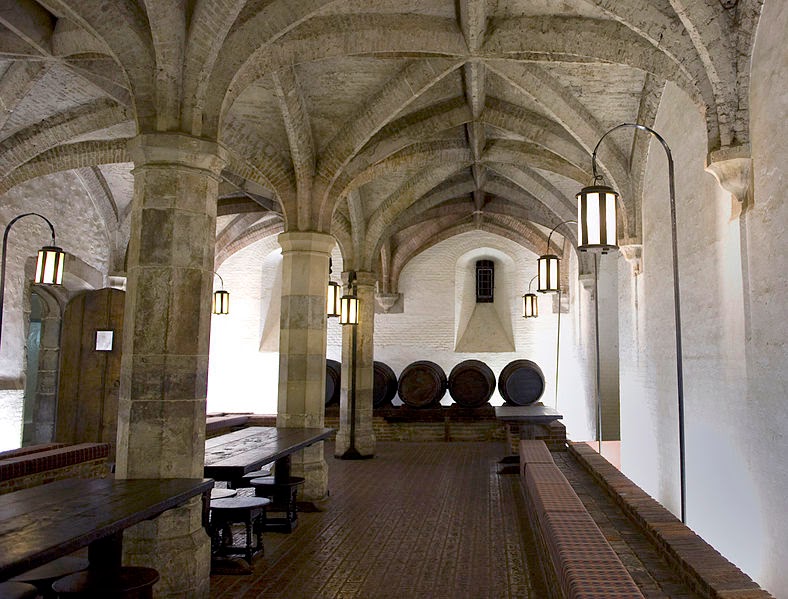
Buried under the Ministry of Defence in Whitehall is an extraordinary historical survivor. Henry VIII’s Wine Cellar is one of the few remaining parts of Whitehall Palace – the main London residence of Kings and Queens (and Lord Protectors – because Oliver Cromwell also lived there) for over 150 years.
Today Whitehall is the name of the broad road linking Trafalgar Square and Parliament Square, or it’s used as a synonym for ‘government’, but Whitehall was once the biggest palace in Europe – bigger than the Vatican, bigger even than Versailles – covering over 93,000 square metres between the river and Green Park. It became a royal palace when Henry VIII confiscated a residence called York Place from Cardinal Wolsey. As well as being Lord Chancellor of England and the most powerful commoner in the realm, Wolsey was also Archbishop of York whose London seat since the 13th century had been York Place.
When Wolsey failed to get Henry’s marriage to Katherine of Aragon annulled, he found himself at the wrong end of the King’s displeasure. His property became forfeit to the Crown and Henry got his hands on Hampton Court Palace and York Place. Henry then spent a huge sum (well over ten million in today’s money) developing and expanding it. He added more rooms, and tennis courts, and a cockpit, and even a tiltyard for jousts. It became know as Whitehall after the white stone used for the great hall. (“You must no more call it York Place: that is past; For since the Cardinal fell that title’s lost. ‘Tis now the King’s, and called Whitehall.” (Shakespeare, “King Henry the Eighth”).
Henry married Anne Boleyn at Whitehall in 1533. And Jane Seymour in 1536. And he died there in 1547.
For more of this sort of stuff, follow StuffAboutLondon on social media. For details click here
Sign up here for my monthly newsletter, or follow me on Instagram, or the StuffAboutLondon Facebook page.
For the next 150 years Kings and Queens lived and died (and in the case of Charles I were executed) at Whitehall and the palace was improved, extended, rebuilt in that glorious London way of higgledy-piggledy, piecemeal development.
There was a big fire in 1691, then a catastrophic one in 1698 – “Whitehall burnt,” wrote the diarist John Evelyn, “nothing but walls and ruins left”. The only significant parts of the palace to still be intact are the Banqueting House, Queen Mary’s steps – and Henry’s Wine Cellar.
It is pretty amazing that the Cellar survived. Not only were the buildings above it razed several times by fire in the 16th and 17th century, and by 18th and 19th Century development, but the original plans for the new MoD buildings and the surrounding roads would have meant the destruction of the Cellar. It was another Queen Mary – this time the widow of George V – who requested that they be saved.
So in 1949 they moved the whole cellar. They couldn’t dismantle it (Tudor brick is too soft) so they dug around and underneath it and encased the whole space in steel and concrete and shifted the thing 9 feet (about 3 metres) to the West and 19 feet (6 metres) lower.
And there it still is, under the Ministry of Defence. Not generally open to the public unfortunately, but used for some MoD events and as the high spot (or perhaps the low spot) of invited tours. Sources and further reading
- London-in-Sight Blog (warning, can take ages to load)
- The Old War Office Building – a History
- The Banqueting House history
To get more like this, sign up for my newsletter. Every month (or so) I’ll send you the latest posts from the site, and some of the most popular bits of the archive.



what a fascinating story i never knew about that and never taught it when i went to school.